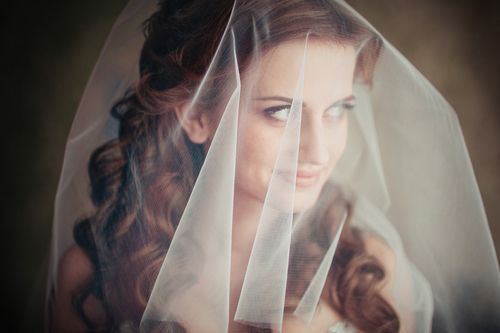 A vast majority of wedding traditions trace their origins back to various points in history. From couples smashing cake in each other’s faces to the rings exchanged during the service, all of these rituals began somewhere. What’s interesting is how the practice can stick around long after the initial meaning has faded from memory. This is especially true of the bridal veil. Though lifting the veil is viewed as a “reveal” in modern weddings, the original purpose of this accessory is quite different.
A vast majority of wedding traditions trace their origins back to various points in history. From couples smashing cake in each other’s faces to the rings exchanged during the service, all of these rituals began somewhere. What’s interesting is how the practice can stick around long after the initial meaning has faded from memory. This is especially true of the bridal veil. Though lifting the veil is viewed as a “reveal” in modern weddings, the original purpose of this accessory is quite different.
Whether or not you wear a veil on your big day is entirely up to you. However, learning more about the history of the practice might influence your decision.
The Origins
The exact date has never been ascertained, but most historians agree that the use of the veil in weddings began during the Roman Empire. Though some argue it began earlier with various Greek traditions, the Romans were the first to thoroughly document the purpose. According to texts from the time, the bride was viewed as an object of desire by evil spirits. To protect her on the journey to the altar, she would wear a veil and disguise herself from any that might cause her harm.
As with most wedding customs, wearing a veil was not consistently popular throughout the centuries. Academics state that the trend would come in and out of style in various parts of Europe as cultures interacted and merged.
The Queen
One specific wedding is responsible for popularizing a number of modern nuptial traditions. When Queen Victoria married Prince Albert on February 10, 1840, it was one of the most talked-about events of the time. Up until this point in England and surrounding areas, brides typically wore red wedding gowns. Victoria made a splash by wearing a dress that was entirely white and featured a classic veil. This was a sensational move that impressed nobles and commoners alike, with historians stating that brides immediately began buying and making white gowns with veils for their own weddings.
The Modern View
History has a way of changing the intention of a decision. Though Queen Victoria simply made a fashion choice with her white gown and veil, people would soon begin to make all kinds of frivolous connections. Throughout most of the 1900s and even in modern times, people connect white wedding gowns to purity. The idea is that a bride wears the color to showcase her innocence and a veil to hide herself from the world until her partner reveals her face before the guests.
The fact that a majority of Western weddings feature brides in white dresses is a testament to how a tradition can persist without the original intention remaining. Most modern couples would be able to make the connection between white dresses and purity, though it is unlikely many would know Queen Victoria popularized the fashion.
The Choice
These days, the decision to wear a veil is usually about style more than anything else. Though you might connect with the idea of warding off spirits or highlighting the symbolism of innocence, don’t feel pressured to wear a white dress and veil simply because it is a tradition. Trends change all the time, and a wedding from a century ago is not going to look anything like a reception in modern times. Make the choice easier by exploring a variety of dresses that both follow the traditional styles and go entirely against the grain.
Wedding traditions shift and change as often as they come and go. While learning about the origins of some of these rituals can be enlightening, don’t let the weight of history impact your decision too much. This is your special day and you can shape it however you see fit.
Add Your Comment